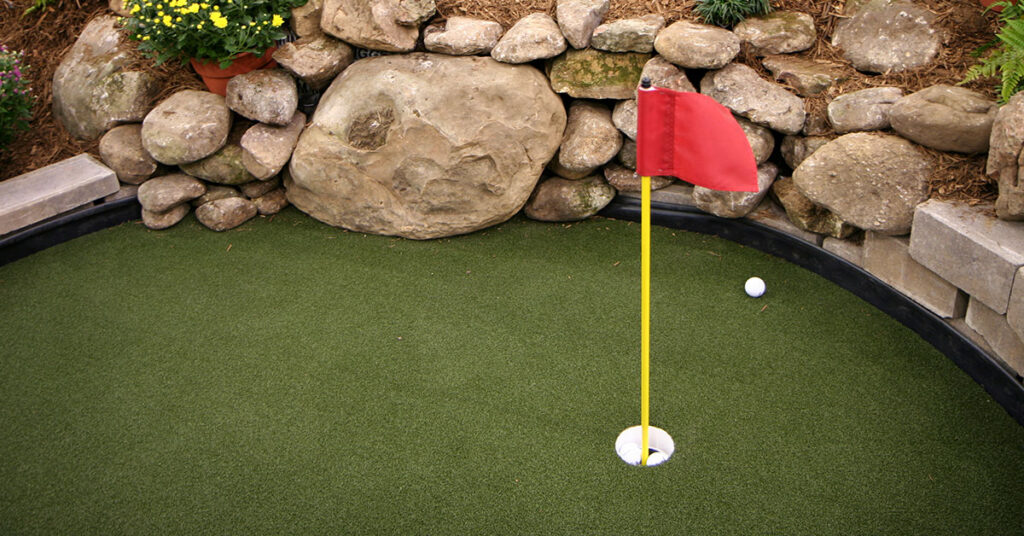For many, a putting green can be a great place to relax, have fun and also improve your golf game. It can also be a great addition for your backyard. You can enjoy the convenience of just stepping out of your back door and feeling like you’re at the golf course. And if you miss a short putt, hopefully nobody’s watching.
So if you’re thinking of investing in a putting green, here are some things that are good to know about them.
Grass Types – Artificial or Natural
On the surface, why wouldn’t you want a natural grass putting green in your backyard? It will have the look and feel of the greens at the golf course and will allow you to get some practice in similar conditions. Oh, and it will also cost you less to install than artificial grass.
Or will it? Sure, initially you’ll pay less to get the grass installed, but don’t forget about the maintenance. Putting greens grass is intended to be really short. That will mean a lot of cutting to keep it that way. Add to that, you need to fertilize it to keep it nice and green and water it when it’s thirsty. Over time, all of these costs can add up.
With an artificial turf green, there really isn’t any maintenance. Other than sweeping it clean from leaves or even snow, it’s ready to play on. Even though it’s not real grass, the ball should react pretty similar to the roll of a regular putting green.
So other than some up front costs, artificial grass may be the way to go.
Type of Terrain – Flat or Hilly
This can depend on the area where you want to place the putting green and if you want it to truly simulate a real green. People can take advantage of the natural contour of the space which may contain some small hilly areas. This can make it more challenging to properly judge the speed and break of the putts.
However, some people may opt for a fairly straight and level green. This should be decided before installation begins so they can make sure the area in flattened if needed. If your green is being used more by children or non-golfers, this will have an easier surface to putt on.
Soil
You will want a good solid base for the ground before beginning your green installation. Compacting the soil as much as possible in areas that are not overly susceptible to moisture is usually fine. However, in areas that will receive a good amount of moisture or that need some added strength, the use of a geotextile fabric would be good to use. These products are used in many civil engineering projects including roads, airfields and retaining structures.
Nylon or Polypropylene Turf
Nylon turf performs well and is a desirable surface for putting greens. Nylon can be tufted into a very high density (face weight). This allows the fibers to be close to each other and you end up with a product that won’t require infill material and a faster, smoother surface. This is done by subjecting the very top of the fibers to a 230 degree heat source for a split second which curls the ends of the fibers creating the “memory” in the fibers.
Nylon turf will cost a bit more than polypropylene but you’ll get a smooth omni-directional roll on your putts.
Polypropylene turf does not contain memory within its fibers. This can cause the turf to want to lay down in one direction. In order to correct this, you have to brush “infill” the turf with sand.
Although this turf is less expensive than nylon turf, there is potential for the golf ball to not always roll straight when putting.
Installing over Compact Stone or Concrete
When installing your artificial turf over a concrete base, the turf can be glued to the concrete substrate. This means that infill is not required to weigh down the surface and keep it in place. This method does provide some cost benefits.
With a compacted stone base, infill will be required in order to hold down the surface. There are also cost benefits with this type of install.

